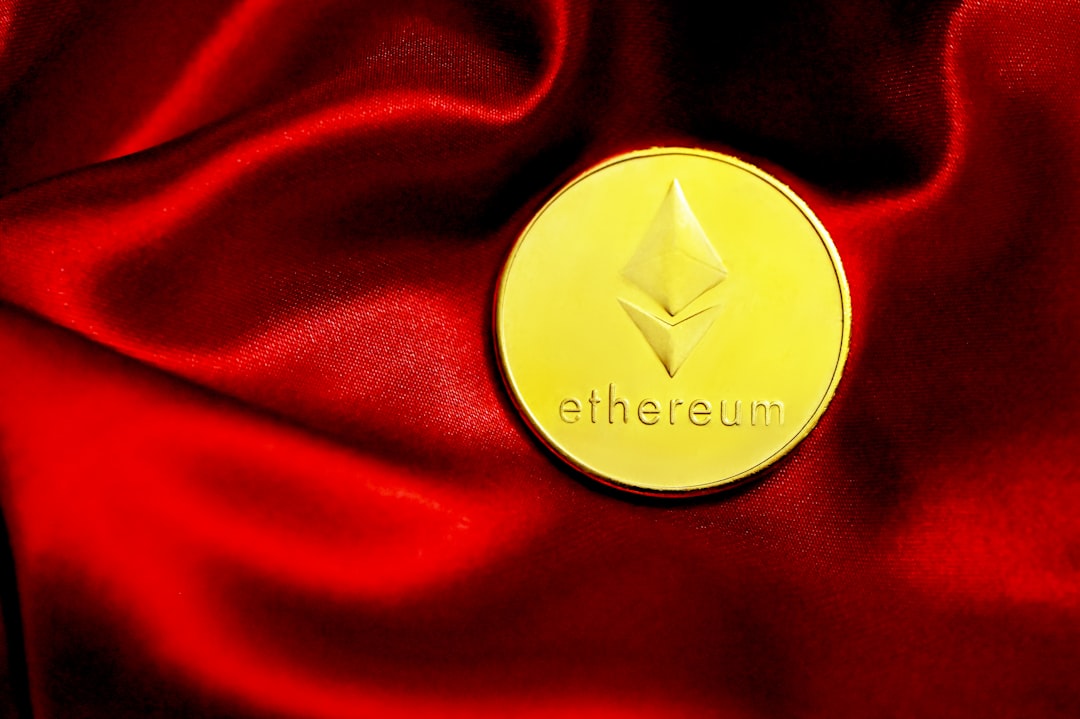Non-Fungible Tokens (NFTs) have taken the digital world by storm, capturing the attention of collectors, artists, and investors alike. These unique digital assets have gained popularity for their ability to represent ownership of one-of-a-kind items in the digital realm. From artwork to music, NFTs have opened up new possibilities for creators to monetize their work and for collectors to own and trade digital assets like never before.
Understanding the Basics of NFTs: What are They and How Do They Work?
NFTs, or Non-Fungible Tokens, are a type of digital asset that represent ownership or proof of authenticity of a unique item or piece of content. Unlike traditional cryptocurrencies like Bitcoin or Ethereum, which are fungible and can be exchanged on a one-to-one basis, NFTs are unique and cannot be exchanged on a like-for-like basis. Each NFT has its own distinct value and cannot be replicated or replaced.
NFTs are created using blockchain technology, which ensures the security and transparency of transactions. When an NFT is created, it is assigned a unique identifier that is stored on the blockchain. This identifier serves as proof of ownership and can be transferred from one person to another. The blockchain also records the entire transaction history of the NFT, providing a transparent and immutable record of its provenance.
The Rise of NFTs in the Digital World: Why Collectors are Flocking to Them
The rise of NFTs in the digital world can be attributed to several factors. One of the main reasons is the appeal of owning unique digital assets. Collectors are drawn to the idea of owning something that is one-of-a-kind and cannot be replicated. NFTs provide a way for collectors to own and trade digital assets in a way that was not possible before.
Another reason for the popularity of NFTs is the potential for them to revolutionize the art world. NFTs have opened up new possibilities for artists to monetize their work and reach a global audience. With NFTs, artists can sell their digital artwork directly to collectors, without the need for intermediaries like galleries or auction houses. This has democratized the art market and given artists more control over their work and their earnings.
The appeal of NFTs is further demonstrated by the high-profile sales that have taken place in recent months. From digital artworks selling for millions of dollars to tweets being sold as NFTs, these high-profile sales have captured the attention of the mainstream media and brought NFTs into the spotlight.
Types of NFTs: From Artwork to Music, Exploring the Different Categories
NFTs come in various forms and can represent a wide range of digital assets. Some of the most popular categories of NFTs include digital artwork, music, virtual real estate, collectibles, and virtual goods in video games.
Digital artwork has been one of the most prominent categories in the NFT space. Artists have been able to create and sell digital artworks as NFTs, allowing collectors to own and trade these unique pieces. This has opened up new opportunities for artists to monetize their work and reach a global audience.
Music is another category that has seen significant growth in the NFT space. Musicians can release exclusive tracks or albums as NFTs, giving fans a unique opportunity to own a piece of their favorite artist’s work. This has created a new revenue stream for musicians and has allowed them to connect with their fans in a more direct and meaningful way.
Virtual real estate is another category that has gained traction in the NFT space. Virtual worlds like Decentraland and Cryptovoxels allow users to buy and sell virtual land as NFTs. This has created a new market for virtual real estate, where users can build and monetize virtual properties.
Collectibles have long been a popular category in the physical world, and NFTs have brought this concept into the digital realm. Collectibles like trading cards, virtual pets, and virtual fashion items can be bought and sold as NFTs, allowing collectors to own and trade these unique digital assets.
Virtual goods in video games have also seen a rise in popularity as NFTs. Players can buy and sell in-game items, such as weapons or skins, as NFTs, giving them a sense of ownership and the ability to trade these items with other players.
The Rarity Factor: How Limited Edition NFTs Increase in Value Over Time
One of the key factors that contribute to the value of NFTs is their rarity. Just like in the physical world, scarcity plays a significant role in determining the value of digital assets. Limited edition NFTs, which are created in small quantities or as one-of-a-kind items, tend to be more valuable than those that are widely available.
The limited supply of certain NFTs can create a sense of exclusivity and desirability among collectors. As more people become interested in owning a particular NFT, the demand for it increases, driving up its value. This has led to some NFTs selling for millions of dollars at auction.
Examples of NFTs that have increased in value over time include CryptoPunks and Bored Ape Yacht Club. These collections of unique digital characters were initially sold for a few dollars each but have since skyrocketed in value. Some rare CryptoPunks have sold for millions of dollars, making them highly sought after by collectors.
The potential for NFTs to become highly valuable collectibles is still relatively new, but as more people become aware of their potential and more high-profile sales take place, it is likely that we will see even more NFTs increase in value over time.
The Importance of Authenticity: Verifying the Ownership and Provenance of NFTs
One of the key advantages of NFTs is their ability to provide proof of ownership and provenance. With traditional digital assets, it can be difficult to verify the authenticity of a piece of content or track its ownership history. NFTs solve this problem by using blockchain technology to create a transparent and immutable record of ownership.
When an NFT is created, it is assigned a unique identifier that is stored on the blockchain. This identifier serves as proof of ownership and can be transferred from one person to another. The blockchain also records the entire transaction history of the NFT, providing a transparent and immutable record of its provenance.
This ability to verify ownership and provenance is particularly important in the art world, where authenticity is crucial. With NFTs, artists can create and sell digital artworks with confidence, knowing that their work is protected and that collectors can verify its authenticity.
However, it is important to note that while NFTs provide a level of authenticity and security, they do not guarantee the quality or value of the underlying asset. It is still up to the buyer to determine the value and desirability of an NFT.
The Role of Blockchain Technology in NFTs: Ensuring Security and Transparency
Blockchain technology plays a crucial role in ensuring the security and transparency of NFTs. When an NFT is created, it is assigned a unique identifier that is stored on the blockchain. This identifier serves as proof of ownership and can be transferred from one person to another.
The blockchain also records the entire transaction history of the NFT, providing a transparent and immutable record of its provenance. This means that anyone can verify the ownership history of an NFT and ensure that it has not been tampered with or duplicated.
The use of blockchain technology in NFTs provides several benefits. First, it ensures the security of transactions by using cryptographic algorithms to protect the integrity of the data. This makes it virtually impossible for anyone to alter or manipulate the ownership history of an NFT.
Second, blockchain technology provides transparency by allowing anyone to view the transaction history of an NFT. This creates a level playing field for buyers and sellers and reduces the risk of fraud or counterfeit NFTs.
Finally, blockchain technology provides a decentralized and distributed network that is resistant to censorship or control by any single entity. This ensures that NFTs can be bought, sold, and traded freely without the need for intermediaries or centralized authorities.
Navigating the NFT Marketplaces: Where to Find and Buy Rare Digital Assets
Navigating the NFT marketplaces can be overwhelming, as there are numerous platforms to choose from and a wide variety of digital assets available for sale. Some of the most popular NFT marketplaces include OpenSea, Rarible, SuperRare, and NBA Top Shot.
OpenSea is one of the largest and most well-known NFT marketplaces. It offers a wide range of digital assets, including artwork, collectibles, virtual real estate, and more. OpenSea allows users to buy, sell, and trade NFTs using Ethereum as the underlying cryptocurrency.
Rarible is another popular NFT marketplace that focuses on user-generated content. It allows artists and creators to mint their own NFTs and sell them directly to collectors. Rarible also offers a governance token called RARI, which allows users to participate in the platform’s decision-making process.
SuperRare is a curated marketplace that focuses on digital artwork. It features a selection of high-quality digital artworks from some of the most talented artists in the space. SuperRare uses a bidding system, where collectors can place bids on artworks and the highest bidder wins.
NBA Top Shot is a unique NFT marketplace that focuses on basketball highlights. It allows users to buy and sell NFTs of NBA highlights, creating a new way for fans to own and trade their favorite moments from the game.
When navigating the NFT marketplaces, it is important to do your research and be cautious. There have been instances of scams and fraudulent activity in the NFT space, so it is important to only buy from reputable platforms and verify the authenticity of the NFT before making a purchase.
The Art of Collecting NFTs: Tips and Strategies for Building a Valuable Collection
Collecting NFTs can be a rewarding and potentially lucrative endeavor. Here are some tips and strategies for building a valuable NFT collection:
1. Do your research: Before buying an NFT, take the time to research the artist or creator, the platform they are selling on, and the overall market trends. Look for artists with a strong track record and a loyal following, as their work is more likely to appreciate in value over time.
2. Set a budget: Determine how much you are willing to spend on NFTs and stick to your budget. It can be easy to get caught up in the excitement of the market and overspend, so it is important to set limits and be disciplined.
3. Diversify your collection: Just like with any investment, it is important to diversify your collection. Consider buying NFTs from different categories or artists to spread out your risk and increase your chances of finding valuable assets.
4. Follow the trends: Keep an eye on the latest trends in the NFT market and look for opportunities to buy undervalued assets. For example, if a particular category or artist is gaining popularity, consider investing in their work before prices skyrocket.
5. Connect with the community: Joining the NFT community can provide valuable insights and opportunities. Follow artists, collectors, and platforms on social media, join online forums and Discord channels, and attend virtual events to connect with others in the space.
6. Be patient: Building a valuable NFT collection takes time and patience. Prices can be volatile, and it may take some time for the value of your assets to appreciate. Be prepared to hold onto your NFTs for the long term and resist the temptation to sell during market downturns.
NFTs as an Investment: Understanding the Risks and Rewards
Investing in NFTs can be highly rewarding, but it also comes with its fair share of risks. Here are some factors to consider when approaching NFTs as an investment:
1. Volatility: The NFT market can be highly volatile, with prices fluctuating rapidly. It is important to be prepared for price swings and not to invest more than you can afford to lose.
2. Lack of regulation: The NFT market is still relatively new and largely unregulated. This means that there is a higher risk of scams and fraudulent activity. It is important to do your due diligence and only buy from reputable platforms and verified artists.
3. Market saturation: As the popularity of NFTs continues to grow, more artists and creators are entering the space, leading to a potential oversaturation of the market. This could lead to a decrease in demand and a decline in prices.
4. Long-term potential: While there are risks associated with investing in NFTs, there is also significant long-term potential. As more people become aware of NFTs and more high-profile sales take place, it is likely that the market will continue to grow and evolve.
5. Diversification: As with any investment, it is important to diversify your portfolio. Consider investing in a mix of different categories or artists to spread out your risk and increase your chances of finding valuable assets.
The Future of NFTs: Predictions and Trends for the Emerging Digital Asset Market
The future of NFTs is still uncertain, but there are several predictions and trends that we can observe in the emerging digital asset market.
1. Mainstream adoption: As more people become aware of NFTs and more high-profile sales take place, it is likely that NFTs will become more mainstream. This could lead to increased demand and a broader range of digital assets being tokenized as NFTs.
2. Integration with the physical world: We may see increased integration between NFTs and the physical world. For example, NFTs could be used to represent ownership of physical assets like real estate or luxury goods, creating new opportunities for ownership and investment.
3. Sustainability concerns: The environmental impact of NFTs has been a topic of concern, as the energy consumption associated with blockchain technology is significant. As the market continues to grow, there may be increased pressure to find more sustainable solutions.
4. Regulation: As the NFT market continues to grow, it is likely that we will see increased regulation to protect consumers and prevent fraudulent activity. This could include measures to verify the authenticity of NFTs and ensure transparency in transactions.
5. Continued innovation: The NFT space is still in its early stages, and we can expect to see continued innovation in the coming years. This could include new platforms, new categories of NFTs, and new ways for creators and collectors to interact.
Joining a new community can be an exciting and enriching experience. Whether it’s a sports team, a club, or an online forum, being part of a community allows individuals to connect with like-minded people who share similar interests and passions. It provides a sense of belonging and support, as well as opportunities for personal growth and development. By joining a community, individuals can expand their social networks, learn from others, and contribute their own unique perspectives and skills. Additionally, being part of a community can foster a sense of purpose and fulfillment, as individuals work together towards common goals and make a positive impact in their shared area of interest. Overall, joining a community can enhance one’s sense of identity, provide a support system, and create lasting friendships and connections.












